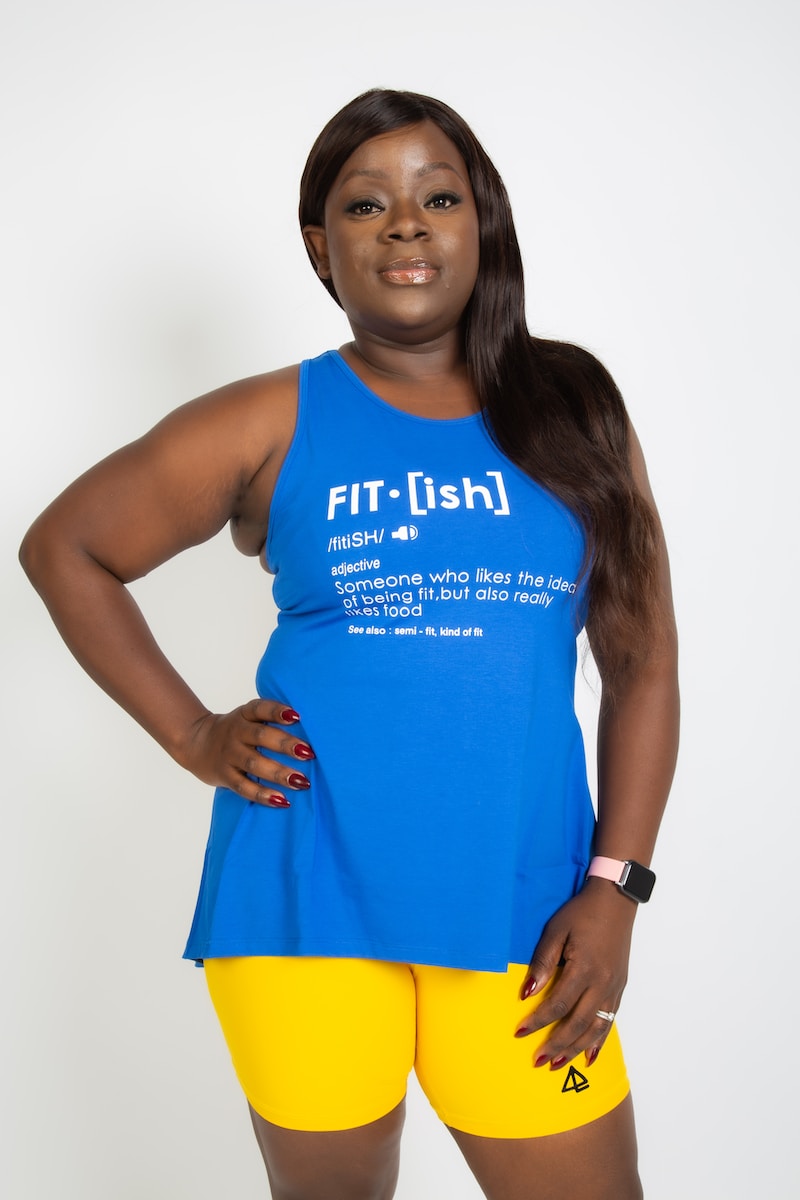Support groups play a fundamental role in promoting overall wellbeing and fostering personal growth. By uniting individuals who share similar experiences or challenges, these groups provide a safe and supportive space for members to share, learn, and heal together. In this article, we will explore the benefits of support groups and how they can elevate your wellbeing on your healing journey.
What are Support Groups?
Support groups are gatherings of individuals who come together to connect, share experiences, and provide mutual support. These groups can be formed around various themes, such as mental health, addiction recovery, grief, chronic illnesses, or specific life transitions. They are usually led by a facilitator who ensures the session runs smoothly and everyone has an opportunity to participate.
Support groups offer a unique environment where individuals facing similar challenges can come together and find solace. Whether it’s a support group for individuals struggling with anxiety or a group focused on grief and loss, these communities provide a sense of belonging and understanding. By sharing their experiences, members can find comfort in knowing they are not alone in their struggles.
The Power of Connection and Belonging
One of the primary advantages of joining a support group is the power of connection and belonging. When faced with difficult challenges or experiences, it is common to feel isolated and alone. Support groups provide a space where individuals can connect with others who have walked a similar path, offering a sense of belonging and understanding that can be incredibly comforting.
In a support group, individuals have the opportunity to share their stories, express their emotions, and be heard without judgment. Through this open and empathetic environment, members can forge meaningful connections and build a supportive network. The power of connection and belonging in a support group can help alleviate feelings of isolation and provide a valuable source of validation.
Emotional Support and Validation
Within support groups, members often share their personal stories, struggles, and triumphs. This sharing provides emotional support and validation, as individuals realize they are not alone in their experiences. Support group members can offer empathy, compassion, and encouragement, creating a nurturing environment that fosters healing and personal growth.
By listening to others’ stories and sharing their own, individuals in support groups can gain a deeper understanding of their emotions and experiences. This emotional support and validation can be transformative, as it helps individuals feel seen, heard, and understood. It allows them to process their feelings and find comfort in knowing that others have faced similar challenges and have come out stronger on the other side.
Shared Knowledge and Information
Support groups are also valuable sources of shared knowledge and information. Members can exchange insights, strategies, and resources that have helped them navigate their challenges. This collective wisdom allows individuals to learn from one another, gaining new perspectives and practical tools to enhance their wellbeing.
Within a support group, individuals can learn about different coping mechanisms, treatment options, or lifestyle changes that have proven effective for others. The group becomes a platform for sharing experiences and discovering new possibilities. Members can discuss and explore various approaches to their challenges, allowing everyone to benefit from the diverse knowledge and expertise present within the group.
Some examples of shared knowledge and information that might be discussed in a support group include specific therapy techniques, self-care practices, helpful books or articles, alternative treatments, or community resources. By tapping into this wealth of information, individuals can broaden their understanding and make more informed decisions about their own healing journey.
Peer Learning and Inspiration
In support groups, individuals can learn from the experiences and successes of others who have faced similar challenges. Peer learning is a powerful mechanism for personal growth and development, as it provides inspiration and motivation to overcome obstacles. Witnessing others’ journeys towards healing can instill hope and ignite a sense of possibility within individuals.
By hearing about the progress and achievements of fellow members, individuals in a support group can gain hope and inspiration for their own healing journey. Seeing real-life examples of people who have faced and overcome similar challenges can be incredibly empowering. It can help individuals believe in their own potential for growth and change.
Peer learning also allows individuals to gather practical tips and strategies for managing their challenges. Hearing about the coping mechanisms and techniques that have worked for others can spark new ideas and approaches. This exchange of knowledge and inspiration creates a dynamic and supportive environment where everyone can learn from each other and grow together.
Practical Coping Strategies
Support groups often focus on equipping members with practical coping strategies to navigate their challenges effectively. These strategies can include techniques to manage stress, improve communication skills, build resilience, or develop healthy habits. By learning and practicing these strategies within a supportive group setting, individuals can enhance their overall wellbeing and improve their ability to cope with adversity.
In a support group, facilitators and members can share specific coping strategies that have proven effective in their own lives. This can range from mindfulness exercises and relaxation techniques to communication exercises and problem-solving skills. The group environment provides a safe space for individuals to practice these coping strategies and receive feedback and support.
By incorporating practical coping strategies into their daily lives, individuals can develop a stronger sense of resilience and empowerment. They can learn to navigate their challenges with greater ease and find healthier ways to cope with stress or emotional difficulties. The support and encouragement from the group can further reinforce these strategies, making them more impactful and sustainable.
Confidentiality and Safe Space
Confidentiality and creating a safe space are paramount in support groups. Members are encouraged to respect one another’s privacy and maintain the confidentiality of shared information. This trust and safety foster an environment where individuals feel comfortable expressing their thoughts, emotions, and vulnerabilities without fear of judgment or breach of confidentiality.
The establishment of confidentiality within a support group is essential for building trust and fostering open communication. It ensures that members can share their experiences and feelings honestly, knowing that what is shared within the group will remain confidential. This confidentiality creates a safe space where individuals can be vulnerable and explore their challenges without the fear of their personal information being shared outside the group.
Creating a safe space goes beyond confidentiality. It also involves creating an environment where all members feel respected, heard, and valued. Facilitators play a crucial role in maintaining this safe space by setting ground rules for communication, encouraging active listening, and intervening if any harmful behavior or judgment arises. A safe space allows individuals to fully engage in the healing process and receive the support they need.
Professional Guidance and Expertise
Many support groups are facilitated by professionals with expertise in the relevant field, such as therapists, counselors, or healthcare providers. These facilitators ensure that the sessions are structured, productive, and focused on the specific needs of the group. They provide guidance, answer questions, and offer professional insights to support members on their healing journeys.
Having a professional facilitator in a support group brings a higher level of expertise and guidance to the discussions. These facilitators have a deep understanding of the challenges faced by the group members and can provide evidence-based information and strategies. They can offer practical advice and support, helping individuals navigate their healing journey more effectively.
Professional facilitators also play a crucial role in managing group dynamics and promoting a positive and supportive environment. They ensure that everyone has an opportunity to speak, encourage respectful interactions, and prevent any harmful or unproductive behavior. Their expertise allows them to provide valuable guidance and structure to the group discussions, maximizing the benefits for all members.
Virtual Support Groups
In the age of technology, virtual support groups have become increasingly popular. These online communities offer the convenience of connecting with others from the comfort of one’s home, eliminating geographical barriers. Virtual support groups provide a valuable lifeline for individuals who may have limited access to in-person groups or prefer the anonymity that virtual platforms can offer.
Virtual support groups provide a unique opportunity for individuals to connect with others who share similar experiences, regardless of their physical location. Through online platforms, individuals can access support groups from anywhere in the world, expanding their network of support beyond local communities. This can be particularly beneficial for individuals in rural areas or those with limited transportation options.
Anonymity is another advantage of virtual support groups. Some individuals may feel more comfortable discussing their challenges and emotions when they have the option to remain anonymous. Virtual platforms allow individuals to participate in support groups without revealing their identity, which can help reduce barriers to seeking support and encourage more open and honest sharing.
How to Find a Support Group
Finding a support group that aligns with your needs and preferences is essential. Here are some steps to help you find the right support group for your healing journey:
-
Research: Start by researching support groups in your local community or online platforms. Look for groups that focus on your specific challenge or experience. Explore websites, online forums, or social media groups that cater to your needs.
-
Ask for Recommendations: Reach out to trusted healthcare professionals, therapists, or counselors for recommendations on support groups that may be suitable for you. They can provide valuable insights and suggestions based on their expertise and knowledge of your situation.
-
Online Directories: Utilize online directories or search engines specifically designed to help individuals find support groups. These directories often provide detailed information about the group’s focus, schedule, and facilitators. Some popular directories include Psychology Today, Meetup, or local community resource websites.
-
Attend a Meeting: Once you have identified a potential support group, attend a meeting or two to assess if it feels like the right fit for you. Pay attention to the group dynamics, facilitator’s approach, and overall atmosphere. Take note of how comfortable and supported you feel in the group.
-
Evaluate: After attending a few sessions, evaluate whether the support group meets your needs, whether you feel comfortable and supported, and whether the group’s focus aligns with your goals. Trust your instincts and consider trying out different groups until you find the one that resonates with you.
Conclusion
Support groups offer a pathway to healing and personal growth by uniting individuals facing similar challenges. The power of connection, emotional support, shared knowledge, and practical coping strategies are just a few of the benefits that support groups provide. Whether in-person or virtual, these groups create safe spaces where individuals can navigate their healing journey together, elevating their overall wellbeing. If you are seeking support on your own healing journey, consider exploring the wealth of support groups available and take the first step towards embracing a brighter future.
Note: The complete article is provided in markdown format below:
“`
Support groups play a fundamental role in promoting overall wellbeing and fostering personal growth. By uniting individuals who share similar experiences or challenges, these groups provide a safe and supportive space for members to share, learn, and heal together. In this article, we will explore the benefits of support groups and how they can elevate your wellbeing on your healing journey.
What are Support Groups?
Support groups are gatherings of individuals who come together to connect, share experiences, and provide mutual support. These groups can be formed around various themes, such as mental health, addiction recovery, grief, chronic illnesses, or specific life transitions. They are usually led by a facilitator who ensures the session runs smoothly and everyone has an opportunity to participate.
Support groups offer a unique environment where individuals facing similar challenges can come together and find solace. Whether it’s a support group for individuals struggling with anxiety or a group focused on grief and loss, these communities provide a sense of belonging and understanding. By sharing their experiences, members can find comfort in knowing they are not alone in their struggles.
The Power of Connection and Belonging
One of the primary advantages of joining a support group is the power of connection and belonging. When faced with difficult challenges or experiences, it is common to feel isolated and alone. Support groups provide a space where individuals can connect with others who have walked a similar path, offering a sense of belonging and understanding that can be incredibly comforting.
In a support group, individuals have the opportunity to share their stories, express their emotions, and be heard without judgment. Through this open and empathetic environment, members can forge meaningful connections and build a supportive network. The power of connection and belonging in a support group can help alleviate feelings of isolation and provide a valuable source of validation.
Emotional Support and Validation
Within support groups, members often share their personal stories, struggles, and triumphs. This sharing provides emotional support and validation, as individuals realize they are not alone in their experiences. Support group members can offer empathy, compassion, and encouragement, creating a nurturing environment that fosters healing and personal growth.
By listening to others’ stories and sharing their own, individuals in support groups can gain a deeper understanding of their emotions and experiences. This emotional support and validation can be transformative, as it helps individuals feel seen, heard, and understood. It allows them to process their feelings and find comfort in knowing that others have faced similar challenges and have come out stronger on the other side.
Shared Knowledge and Information
Support groups are also valuable sources of shared knowledge and information. Members can exchange insights, strategies, and resources that have helped them navigate their challenges. This collective wisdom allows individuals to learn from one another, gaining new perspectives and practical tools to enhance their wellbeing.
Within a support group, individuals can learn about different coping mechanisms, treatment options, or lifestyle changes that have proven effective for others. The group becomes a platform for sharing experiences and discovering new possibilities. Members can discuss and explore various approaches to their challenges, allowing everyone to benefit from the diverse knowledge and expertise present within the group.
Some examples of shared knowledge and information that might be discussed in a support group include specific therapy techniques, self-care practices, helpful books or articles, alternative treatments, or community resources. By tapping into this wealth of information, individuals can broaden their understanding and make more informed decisions about their own healing journey.
Peer Learning and Inspiration
In support groups, individuals can learn from the experiences and successes of others who have faced similar challenges. Peer learning is a powerful mechanism for personal growth and development, as it provides inspiration and motivation to overcome obstacles. Witnessing others’ journeys towards healing can instill hope and ignite a sense of possibility within individuals.
By hearing about the progress and achievements of fellow members, individuals in a support group can gain hope and inspiration for their own healing journey. Seeing real-life examples of people who have faced and
Frequently Asked Questions
1. What are support groups?
Support groups are gatherings of individuals who come together to connect, share experiences, and provide mutual support. They are usually formed around specific themes or challenges, such as mental health, addiction recovery, grief, chronic illnesses, or life transitions. Support groups are led by facilitators who ensure the sessions run smoothly and everyone has a chance to participate.
2. How do support groups promote wellbeing?
Support groups promote wellbeing by providing a sense of connection and belonging. They offer a safe space for individuals to share their stories, express their emotions, and be heard without judgment. The power of connection and belonging in support groups can alleviate feelings of isolation and provide validation. Support groups also offer emotional support, shared knowledge and information, peer learning and inspiration, practical coping strategies, and a confidential and safe space.
3. How can I find a support group that suits my needs?
To find a support group that suits your needs, you can start by researching support groups in your local community or online platforms. Look for groups that focus on your specific challenge or experience. You can also ask trusted healthcare professionals or counselors for recommendations. Utilize online directories or search engines specifically designed to help individuals find support groups. Once you have identified a potential support group, attend a meeting or two to assess if it feels like the right fit for you. Trust your instincts and evaluate whether the support group meets your needs, whether you feel comfortable and supported, and whether the group’s focus aligns with your goals.
4. What are the advantages of virtual support groups?
Virtual support groups provide the convenience of connecting with others from the comfort of your own home, eliminating geographical barriers. They allow individuals to access support groups from anywhere in the world, expanding their network of support beyond local communities. Anonymity is another advantage of virtual support groups, as individuals can participate without revealing their identity. Virtual platforms can help reduce barriers to seeking support and encourage more open and honest sharing.









